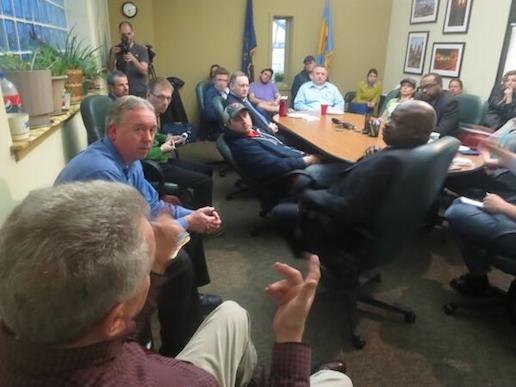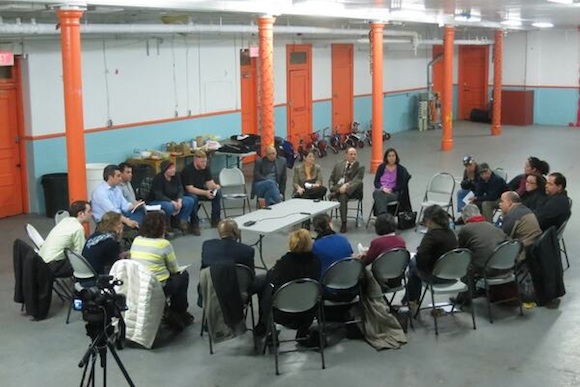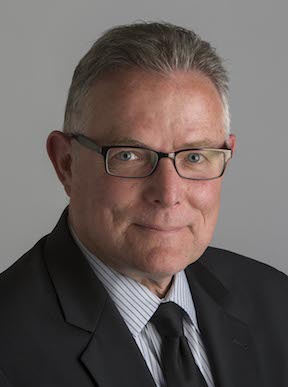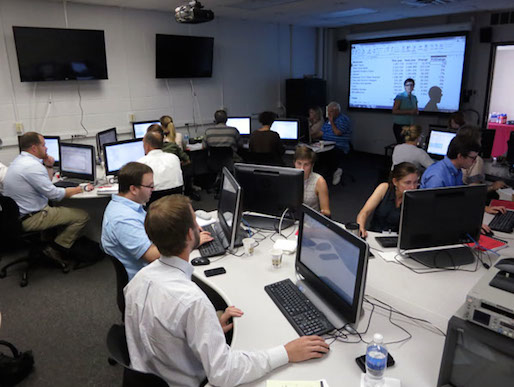Last year, Philadelphia's AxisPhilly won the Online News Association's Award for General Excellence for a small news site. So, needless to say, many in the local industry were surprised at June's announcement that the site was closing down.
A two-year-old non-profit local news site dedicated to civic issues and boasting columnists like Solomon Jones and Tom Ferrick, AxisPhilly operated via Temple University's Center for Public Interest Journalism (CPIJ), launched in 2010 thanks in part to funding from the William Penn Foundation.
The dean of Temple's School of Media and Communications, David Boardman, talked with Keystone Edge in August about what's next for CPIJ, saying that the announcement of the site's demise had caused a “misunderstanding”: Temple did not decide to cease funding AxisPhilly.
“Temple never funded it to begin with,” explains Boardman. Instead, Temple was a “pass-through” for funding that came through outside foundations.
Boardman has been a dean at Temple for only about a year. A former president of the grassroots non-profit Investigative Reporters and Editors, he spent most of his career at the Seattle Times, where he worked his way up to the editor's desk. Investigative journalism is close to his heart.
When he arrived at his new desk at Temple, “One of the very first things that was put on my plate was, 'What are you going to do about AxisPhilly?'” he recalls.
The question came as a surprise to him, since deciding the fate of the floundering site hadn't entered into his interview process. But he dove into conversations with board members and staff, and took a hard look at the bottom line.
“It became pretty clear to me in a relatively short period of time that it wasn't a sustainable model,” he says of the publication's “burn rate” — in other words, there was no viable money coming in to support the venture, despite the high caliber of the work.
Part of what his investigation made clear was that in the two years since its launch, AxisPhilly's original mission had drifted significantly from the funders' vision.
“They were funding lots of small non-profit journalism outlets in Philly, and they wanted a way to network those together,” says CPIJ director and Temple Department of Journalism Chair Andrew Mendelson. AxisPhilly began with a push to “create an organization that will further the network, help supply some of the things these small organizations can't do on their own,” like technology and data services, “and fill in the gap with some original reporting as well.”
But instead of becoming primarily a networking hub and resource for existing news ventures, AxisPhilly began to focus on its own reporting, and while Mendelson and Boardman both tout the worthy work of its writers and staff, the site just didn't get the traction — or the readers — it needed to survive.
As dean, Boardman had a tough call to make.
Though AxisPhilly was technically under the auspices of Temple, it didn't involve the university's faculty or students, so “didn't dovetail with any sort of educational mission here,” argues Boardman. “I need to make sure I'm looking for projects that both serve the Philadelphia community, help enhance the quality of journalism around here, and promote the right opportunities for our students and faculty.”
Ultimately, AxisPhilly didn't fit the bill.
AxisPhilly may be gone, but CPIJ is still very much on the scene. So what's next?
One aspect of the Center's new focus is a mobile media startup from former Digital First Media executive Jim Brady, who will also be teaching a course in entrepreneurial journalism. Originally billed as Brother.ly, Brady's self-funded venture is now branded as Billy Penn, and is rolling out this fall. Billy Penn hopes to catch the interest of locals who have unplugged from more traditional news sources.
Meanwhile, CPIJ has sponsored over 100 area journalists to attend professional conferences.
Mendelson says there are plenty of other projects afoot, including an August “data journalism boot camp.” There's also a CPIJ workshop on protecting data security coming up in the fall, along with the Center's trademark Pitch Fest, a workshop geared toward community organizations and non-profits that need guidance on how to get their stories on the radar of media outlets.
“Community members in general don't really understand how to get their stories to journalists,” explains Mendelson.
This isn't a new problem — legacy media has always leaned heavily on sources such as public officials, powerbrokers, politicians or prominent businesspeople with their own PR machines. He thinks that imbalance is “exacerbated” in the digital age, as more and more news is aggregated and packaged across multiple platforms, and “we have fewer people who are journalists, with smaller budgets to go out and do longer-term projects.”
These are the big questions for the next generation of journalists and the communities they'll inform.
The biggest thing is “controlling their own path,” says Mendelson of today's journalism students. On the school side, that means preparing students to take on many forms of multimedia storytelling.
And it's also about the mindset that “things will keep changing constantly, whether it's software or platforms or whatever,” and a successful modern journalist must be an adaptable “self-learner” for life.
Boardman and Mendelson agree that beyond skills like writing, analyzing documents and data, interviewing, and the ethics of journalism, business-savvy is key.
As Mendelson puts it, “We want to infuse entrepreneurialism so [students] can see themselves as their own businesspeople, and take control that way.”
Today's young writers aren't going to have a career like Boardman's. They may freelance for many publications, collaborate with other groups, or launch their own platforms. Besides traditional journalism skills, their teachers need to “make sure [students] also have some fundamental business acumen, which I didn't have when I came out of journalism school” and into 30 years at one newspaper, explains Boardman.
And he wants the community to know that despite the demise of AxisPhilly, “Temple and the School of Media and Communication are going to be more involved with local journalism, not less.”
Overall, Boardman is optimistic.
“It's a national phenomenon that programs in journalism continue to grow,” he says, “which is curious to a lot of people.”
That's because students are “fearless.”
“They've already run the gauntlet of their parents [and] their guidance counselors saying, 'Why do you want to do that?'” explains Boardman. “These are people who are really committed to the values of journalism, and excited about inventing a new future for it.”
ALAINA MABASO, a Philadelphia-based freelance journalist, has landed squarely in what people tell her is the worst possible career of the twenty-first century. So she makes Pennsylvania her classroom, covering everything from business to theater to toad migrations. After her editors go to bed, she blogs at http://alainamabaso.wordpress.com/. Find her on Twitter @AlainaMabaso.









